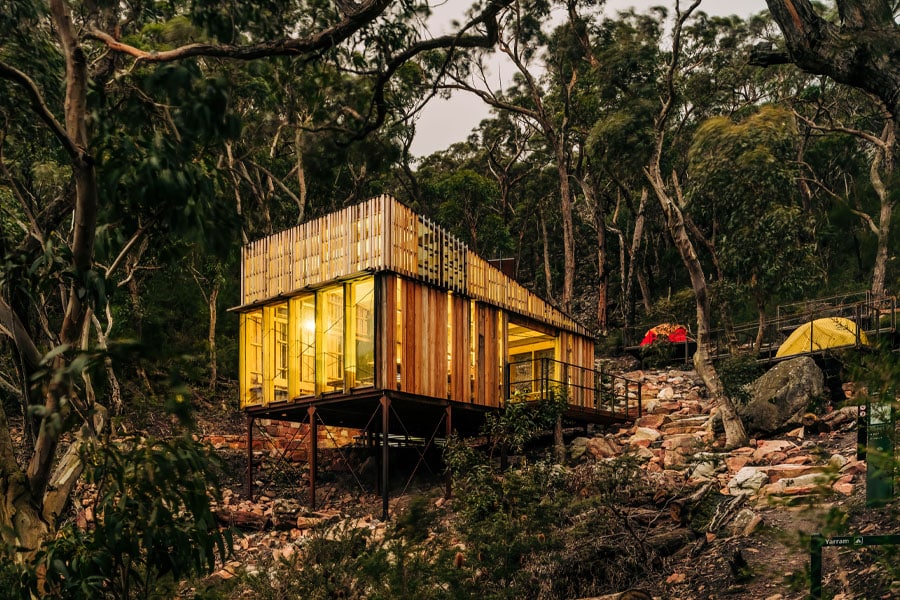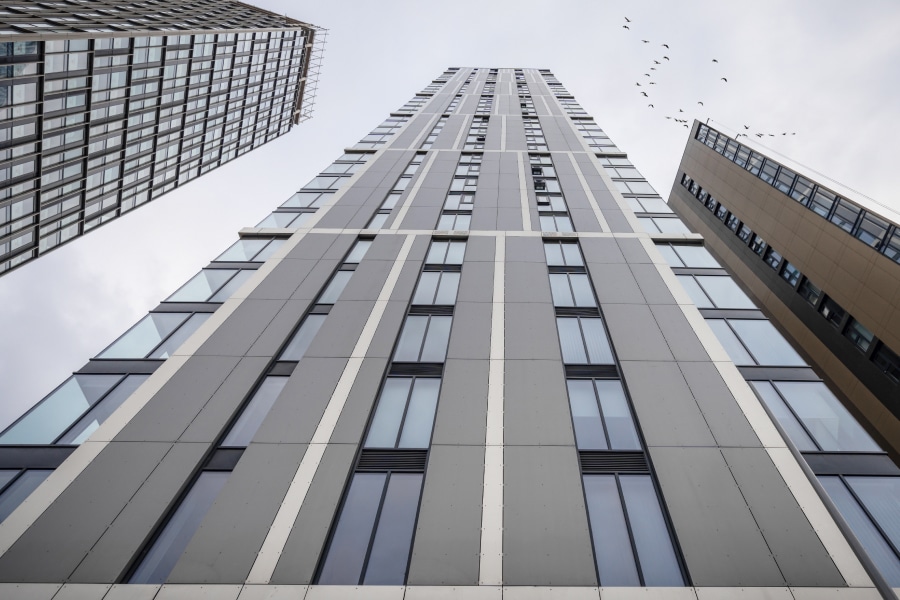In 2019, during the planning stages for the construction of a portion of U.S. Highway 550 in Durango, Colorado, archaeologists from Alpine Archaeological Consultants discovered a Pueblo I-period (about 750 to 900 AD) pithouse, a common dwelling for indigenous people. This was a significant find, yet ultimately the site was filled in and covered over, as were several others nearby, to make way for a 1.5-mile stretch of road being built to alleviate the danger of this highly trafficked area. Making these types of ethical and economic choices is part of many construction projects.
Companies like Alpine are part of a $1 billion industry devoted to cultural resource management or heritage management. “We exist to help federal agencies and private clients ensure that federally regulated projects consider the impacts to cultural resources so they can move forward,” said archaeologist Kim Redman, Alpine’s president and general manager.
The company works in 12 states in the Mountain West, Great Plains and Great Basin. In that part of the country, there are a lot of federal lands and agencies that might be involved in a project. Alpine doesn’t work for a particular federal agency. The firm’s clients are mostly private, often developers, architects and engineers, that do “large linear projects, pipelines, transmission lines. They cross multiple state lines. We help them make sure they’re compliant with the federal requirements,” Redman said. Sometimes a firm will hire Alpine as part of its own due diligence “either out of the goodness of their heart or as a way to reduce risk. Many clients who work repeatedly in the region want to do the right thing because long term, not doing so can hurt their business.”
Halt delays
The best time to hire an archaeological consultant is during the planning stage when a client is deciding on a route or detailing where they’ll be constructing. “Our industry exists to help proponents install their project and limit negative impacts, but we can only do that efficiently if we are called early. Even if fieldwork is completed quickly, we need to write reports and allow the compliance process to be completed before construction can begin,” Redman said. “We really need to be there at the planning stage to hopefully minimize the amount of work needed as a project goes into construction.”
A 2015 KPMG global construction survey found that just 25% of construction projects came within 10% of their original deadlines in the three years prior. What’s more, just 8.5% of big construction projects overall are delivered on time and on budget, according to research by economist Bent Flyvbjerg, who has spent decades studying megaprojects. Clearly the COVID-19 pandemic and its aftereffects, namely supply chain issues, material and labor shortages, have only worsened the situation for the construction industry. There’s no need for a contractor to add in a work stoppage for cultural artifact discovery. “Time is money, and it’s much more efficient to hire four archaeologists than to pay for six large pieces of equipment,” Redman said. “Time is what we can provide our clients.”
Discovery process
Redman has 25 archaeologists on staff. They begin their work by walking the project area. “If someone came out with us it might just look like we’re hiking,” she said. But they’re looking at the ground to identify archaeological sites—“any evidence of human occupation older than 50 years,” which, Redman jokes, at this point could be “Pabst beer cans.” Those, however, aren’t what she refers to as culturally or historically significant.
If the team finds something during the walking phase, it investigates the site’s importance to the region within the context of more than 10,000 years of prehistory. It does a “desktop review,” in which the team researches available data from SHPOs and THPOs (state and tribal historical preservation offices)—survey records, historical topographical maps, federal government land maps and fur trader maps. “Some of the earliest federal government maps prior to homesteading would actually show prehistoric or Native American villages. There’s quite a bit of information that can be gleaned from a paper records search, but nothing replaces getting boots on the ground,” Redman said.
When most people picture an archaeologist’s work, they imagine them “digging square holes and finding neat stuff,” Redman said, “but that activity, which we call ‘data recovery,’ is sort of the last chance. We try to promote avoidance; from a construction perspective it’s less expensive and it’s better for the resources.”
ALSO ON BUILT:
In other words, if Alpine discovers something significant at a site, they work with their clients to find a way to redesign the project to avoid the significant area altogether. “If that doesn’t work, we start exploring other ways we can reflect the value of that site and collect data and share it with the public and the scientific community. We learn something from the site before it’s destroyed,” Redman said.
With Highway 550, the planning efforts were very difficult, Redman said. “There was no easy way to pick a route [for the highway] that checked all the boxes for public safety, private residences and the environment that also avoided the archaeological sites. The process took longer than usual because we’d survey and resurvey to find the perfect route.”
In the end, Redman said, “the Colorado Department of Transportation worked hard to pick the best route for all people and resources and ultimately chose a route that impacted seven archaeological sites. That’s nobody’s goal situation, but that’s where it landed.”
As an archaeologist, Redman has mixed emotions when a significant resource will be impacted by development. “On one hand,” she said, “it means that there will be an opportunity to learn more about the past and connect to present peoples, but on the other hand we only get that opportunity because a part of our past is going to be disturbed. Physical evidence of past human activity, which is much more than arrowheads or pot sherds, is a nonrenewable resource, so we take these opportunities to look at the contexts and relationships and learn all we can.”
Alpine completed data recovery excavations and found “houses, small room blocks and evidence of significant human domestic occupation. Some of what we found was likely ceremonial,” Redman said. Alpine collaborated with local tribes, the Colorado Department of Transportation, state agencies and the Federal Highway Administration to collect and interpret as much as possible before the project was affected by construction. With Highway 550 in progress as of this writing, Alpine is still on board.
As the federal funding from the Infrastructure Investment and Jobs Act filters down and more federal projects are approved, firms like Alpine are going to be in even higher demand.
The CRM industry, with the support of the overall archaeological community, “expects to meet the demand for our type of work,” Redman said. New jobs will be created, but Redman feels certain her firm and others are prepared for the challenges and opportunities.
She admits that hiring is difficult right now—as it is across the US—but she has high hopes that “this potential boom of activity will entice young people into this industry. I rarely tell someone what I do for a living without hearing, ‘Oh, I loved that class,’ or ‘I wanted to do that but went into accounting so I could earn a living.’ People like to think about the past, hold pieces of history in their hands, and we need them to know that they can earn a living doing that. It’s not all Pabst cans—which I suspect will never be significant—and arrowheads.”












